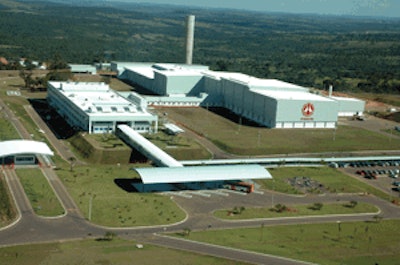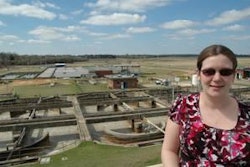
To comply with environmental regulations, authorities in many countries around the world are gradually demanding that poultry processing plants relocate away from cities. For new plants, being located away from major centres of population is seen as the only option.
Sometimes the selection of a suitable new location can be a significant challenge. In some countries, governments require a minimum distance of 5 kilometers between the processing plant and chicken farms to ensure biosecurity.
Double-edged sword
These out-of-town locations are not only a problem for processors. In addition, potential workers may see the new location of the poultry plant as an obstacle. As plants increasingly move away from cities, where facilities such as schools, medical centres and government offices are located, workers’ quality of life and options for study decline.
Families living in rural areas are acutely aware that studying is important to improve their prospects. If they do not study, then many doors will remain closed to them, especially when looking for employment. For poorly qualified workers, once a company is known to be in need of non-specialized personnel, the queue of applicants becomes very long and the probability of being selected lowers considerably.
Being conscious of this situation, many people make a substantial effort on a daily basis, both physical -- walking long distances and using any means of transportation available -- and economic, to obtain at least a technical qualification. With qualifications and some experience, the chances of getting a job increase, as there are fewer specialized personnel.
On the other hand, in cities there are specialized institutions, which offer short courses in areas such as beauty, handicrafts, baking and so on. If working locally, people wanting to enroll in these courses can find a way to attend on a daily basis and on time in order to achieve their goals. This training and practice can increase their employment prospects, or can help them start their own small business with a very low investment.
Life beyond work
Buying food, groceries and home products can also become difficult if the plant is located too far from the city. For example, if shifts at the plant usually finish on Saturday at 16:00, workers will have to leave their shopping for Sunday, which may be too late as some shops may be closed on this day.
Many workers may also face some problems in conducting personal activities. For example, if a worker needs to visit a government office, he or she will have to ask for special permission to leave during working hours (which affects the rhythm of processing). Otherwise, they will either arrive late or find an already long queue of people when they get to their destination.
The typical situation outlined above represents a challenge for poultry processing plants, which, due to the nature of their operations, are demanding ever-more trained personnel. Unfortunately, the only way to obtain the necessary experience is through day-to-day work and education.
In addition, in rural areas there are only a few transport companies with only a few buses. If passengers (workers) are not at the bus station on time, they will have to wait for a long time for the next bus. Consequently, they will arrive late for work.
So how do these factors directly affect production?
Price to be paid
Plants sometimes process the planned number of chickens by working overtime. This increases labor costs, but if staff is missing, the plant managers may have to reduce the speed of the overhead conveyor, making order fulfillment more difficult.
The worst scenario is when the plant administration has to leave live chickens overnight in order to process them the next day. This decision can increase the risk of death by heat stress.
Some companies, concerned and aware of this daily issue, have come to interesting agreements with employees to meet everyone’s needs, i.e. reaching daily production targets and allowing personnel enough flexibility to conduct their own personal activities.
There are a number of measures that can be implemented. If necessary, managers can alter the work area to make workers more comfortable physically. This should increase the speed of the overhead conveyor and could shorten the shift period by at least one hour, while still processing the same number of chickens.
For instance, if the plant usually operates from 07:00 to 16:00, with a new schedule, it could operate from 06:00 to 14:00. This would mean that personnel could leave work earlier, allowing them to reach the city in time to conduct personal business.
Some companies also ensure that their employees are not wasting their time waiting for public buses by providing transportation to and from the city, at no cost to the workers. This strategy represents a double saving for personnel -- money and time. Additionally, employees will appreciate this commitment from the company in helping them return to their homes on time.
Regarding special training, companies have entered into agreements with educational bodies to offer free workshops in computers, the Internet, electricity, plumbing, sewing, etc., at the end of a shift. Managers can divide the working week into two sets of three days: three days to leave early and carry out personal activities and the other three for training after work.

















